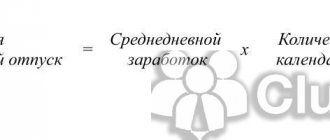At the beginning of 2021, the procedure for calculating the amount of taxes on wages changed in the Russian Federation. The changes affect deductions when issuing wages that are less than the minimum wage for a citizen.
Transfers from salary to the Pension Fund will help ensure old age
Features of salary deductions to the Pension Fund
Here is an example of salary deductions: suppose a leading programmer receives 100,000 rubles per month. The organization where the employee works withholds personal income tax in the amount of 13,000 rubles. As a result, the employee will receive 87,000 rubles. Contributions for health and pension insurance are already received by the employer. Assuming that the company does not have the right to use reduced tariffs, social charges will be as follows:
- 22% - the amount of compulsory insurance (pension);
- 5.1% - the amount of medical insurance;
- 2.9% - the amount of deductions for temporary incapacity and due to maternity.
The organization transfers insurance premiums related to injuries to the fund. The amount of deductions is influenced by the assigned professional risk class - from 0.2% (class 1) to 8.5% (class 32). If we assume that the organization has been assigned the first risk class, the amount of deductions will be equal to 0.2%. The total amount of deductions will be 30.2%. This percentage is taken from accrued wages. In the example given, 30,200 Russian rubles are charged.
Pension accruals have a savings and insurance part
Who makes contributions to the Pension Fund
By law, citizens are not required to pay contributions for themselves to various insurance funds, including the Pension Fund. Employers do this instead:
- enterprises and organizations that use hired labor;
- individual entrepreneurs who do not involve outsiders in their business;
- individuals who do not have the status of an individual entrepreneur, but carry out professional activities;
- citizens who hire workers to provide day-to-day services, such as drivers or housekeepers.
There are often situations when the payer or employer belongs to several categories simultaneously. For example, an individual entrepreneur uses the services of a security guard or a maid. Then the obligations to pay contributions are differentiated.
Commercial organizations and individual entrepreneurs must pay contributions, regardless of the taxation system with which they have to work. Legal entities must pay and accrue insurance premiums on a monthly basis. In this situation, individual entrepreneurs have a greater choice: they can make insurance contributions quarterly or monthly. Each individual entrepreneur independently determines the optimal payment regime.
The future pension is formed by the employer from insurance contributions withheld from the employee’s salary
Is it possible not to pay a mandatory pension contribution?
Payment of the pension contribution is mandatory. Only voluntary cash contributions are allowed not to be paid. Funds are not deducted if the employer has registered the user as a “black” employee. In any case, the employee will not see that kind of money; most likely, the employer will not raise wages if a decision is made to relieve him of paying contributions and he wants to keep the money.
On what income do you not have to pay tax?
Citizens do not need to pay contributions to the Pension Fund from any income. A number of articles are considered an exception, and users are not punished for unpaid contributions to the treasury.
For what you are allowed not to pay taxes to the funds:
- maternity funds;
- unemployment benefits;
- compensation for unused vacation by a citizen.
Part of the taxes paid can be returned in the form of deductions. This is due to citizens who pay for doctors’ services or children’s education. The condition must be met that wage taxes must be paid regularly. Please keep in mind that tax deductions should not exceed the amount of taxes paid and the established limit of 260,000 rubles.
You may not have to pay tax on some income, such as unemployment benefits.
Consequences of illegal earnings for an employee
Receiving a “black” salary is fraught with the following adverse consequences for an employee:
- Lack of social security . So, if an employee gets sick, becomes pregnant and gives birth to a child, or decides to quit, then he is not entitled to all the payments guaranteed by law: compensation for certificates of incapacity for work, payment of maternity benefits, child benefits (based on their average earnings), severance pay and compensation for unused vacation upon dismissal .
- There are high risks that the employer will stop paying wages and the employee will have minimal chances of proving this to regulatory authorities.
- An employer can unilaterally, without the employee’s consent, reduce his salary.
- The employee will not be accrued seniority and future pension.
- An employee may be held accountable for tax evasion.
- Unprotected labor rights , which are specified in the employment contract.
Deadlines for paying taxes on payroll
Most contributions today are administered by the Federal Tax Service. The Social Insurance Fund is responsible only for deductions related to injuries. The deadline for payment of such payments is no later than the 15th day of the month following the reporting month. For missing the deadline for paying contributions, a citizen will be held accountable and will have to pay a fine. A penalty will be charged for each delay. An individual entrepreneur is required to pay deductions from wages:
- for pension insurance;
- for health insurance.
Contributions must be paid, even if there is no income from the business or the citizen is not active. The exception to the rule is self-employed citizens. They do not pay mandatory contributions. Payment of payments becomes optional only if the individual entrepreneur is closed. However, there are temporary periods when an individual entrepreneur can receive a deferment on paid contributions: serving in the army, caring for children over one and a half years old or a disabled person.
Deductions are administered by the Federal Tax Service and the Social Insurance Fund







